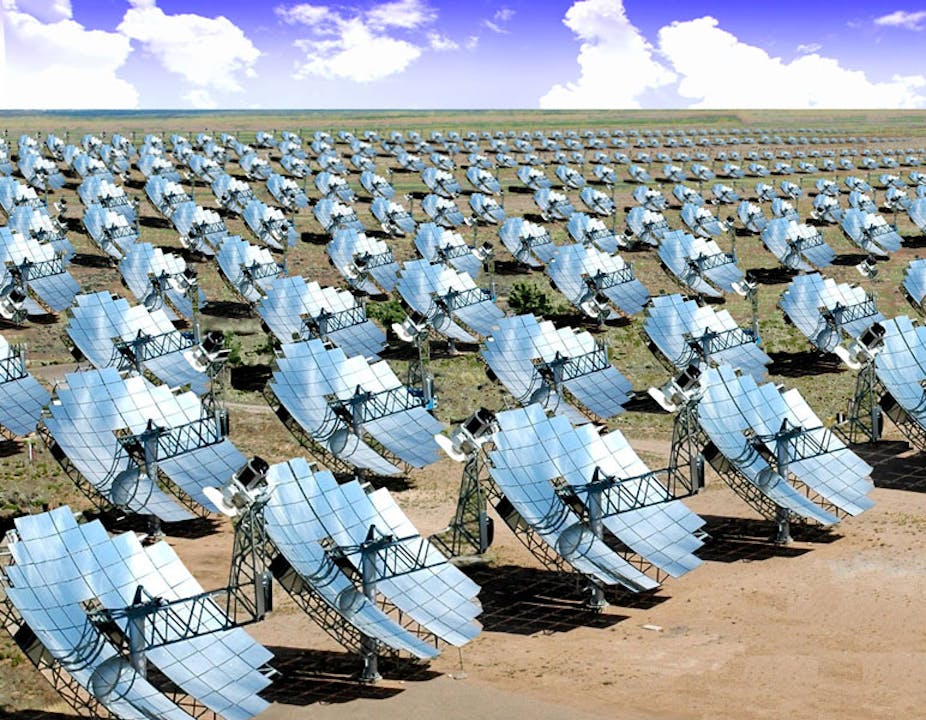Solar thermal energy will halve in cost by 2020, the new director of the CSIRO’s Australian Solar Thermal Research Initiative said today.
Solar thermal energy uses the concentrated heat of the sun to create steam, which turns a turbine and creates a clean, renewable power source.
However, it remains expensive compared to other forms of energy due to fossil fuel subsidies and the limited operator hours of solar thermal energy power plants.
The CSIRO’s $87 million Australian Solar Thermal Research Initiative (ASTRI), which brings together the country’s top researchers in the field, aims to make solar thermal energy cheaper by developing new, more efficient technology and finding ways to reduce capital costs.
Dr Manuel J Blanco, who began this week as ASTRI’s new director, said the research centre would cut the cost of solar thermal energy to 12 cents a kilowatt hour by 2020, down from 25 cents a kilowatt hour now.
“The situation right now is that even though this technology had its start in the United States in the 1990s, it wasn’t until 2005 there was been a commercial market for this technology,” he said.
“But this technology has a lot of potential and there is a lot of momentum right now.”
ASTRI is researching ways to cut the cost of building the solar power plants by up to 50%, boost the plants’ operating hours by 50% to sell more electricity to the grid, improve plant efficiencies and reduce operating and maintenance costs.
Dr Blanco, who has worked in the field for almost 30 years and was previously in charge of solar thermal energy at Spain’s National Renewable Energy Centre (CENER), said Australia was well placed to lead research on the technology.
“I have a good outlook on what is happening in different countries with this technology and I came to the conclusion that what’s happening at CSIRO in Australia is very interesting indeed,” he said.
“Overall you have a large potential for solar radiation and you are located in a part of the world near a lot of other countries that are going to deploy this technology like India, South Africa and China. There’s a lot of demand emerging in developing countries for solar thermal energy.”
But UNSW environmental studies professor Dr Mark Diesendorf said medium-scale concentrated solar thermal (CST) required supportive government policies, such as feed-in tariffs, to stimulate the market.
“While the Australian government is funding research and development in solar energy, it is unfortunately reluctant to implement the necessary policies to build the market for medium-scale solar power stations, both photovoltaic and CST, and so to further reduce their costs.”
Dr Diesendorf said while CST was currently more expensive than solar photovoltaic, it had the advantage of storing overnight part of the heat energy it collected during the daytime.

